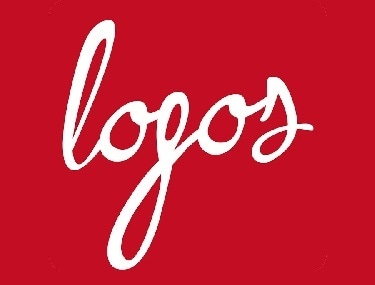Transfection is a process whereby foreign genetic material is introduced into eukaryotic cells. To this end, several transfection techniques have been developed. However, irrespective of the method used, the transfection efficiency is not 100%.
Although this issue can be overcome to some extent by stable transfection, variability in the transfection efficiency is unavoidable in the case of transient transfection. This means that to compare the results of different experiments, the transfection efficiency must be determined every time transient transfection is performed.
One easy and widely used technique to determine the transfection efficiency involves the use of the GFP gene. By forming a fusion protein between the protein of interest and GFP, the expression of the protein of interest can be determined by measuring the presence of GFP protein.
Quantification of GFP Transfection Efficiency
The Luna-FL dual fluorescence cell counter is an advanced instrument (Figure 1-A), fitted with an optical module for fluorescence signal and bright field signal detection.
Figure 1-A. Luna-FL Dual Fluorescence Cell Counter
Figure 1-B. Schematic of optical module of Luna-FL
Figure 1-B shows the schematic layout of the optical module of Luna-FL. Table 1 lists the optical specification of Luna-FL fluorescence cell counter.
Table 1. Optical specification of Luna-FL
|
Excitation
|
470/40nm
|
|
Dichroic (cutoff)
|
495nm
|
|
Emission (FL1)
|
530/50nm
|
|
Emission (FL2)
|
600LP
|
Fluorescence channel 1 (FL1) is sufficient for stimulating GFP and receiving the light emitted from GFP. It also picks up signals emitted from Yellow Fluorescence Protein (YFP), although the excitation efficiency is less than with GFP.
In order to determine the GFP transfection efficiency with the Luna-FL fluorescence cell counter, 10µL of negative control sample is tested first, which is either a mock-transfected control or a non-transfected control. This step allows the background fluorescence of the cell to be calculated. The experimental samples are then analyzed.
Cells that irradiate a fluorescence that is stronger than the background level are assumed to be "transfected." This approach is based on the same principal as the most commonly used technique, flow cytometry analysis.
The Luna-FL fluorescence cell counter combines the algorithm of flow cytometry and the hardware configuration of fluorescence microscopy, therefore providing the benefits of both instruments. The highly accurate device is affordable, maintenance-free and does not require special training or a dedicated operator. It can also be applied to challenging samples.
Experimental Framework
In this experiment, the 293T cells are maintained in a healthy condition as per the instruction of the transfection method. A GFP transfection experiment is then performed using suitable negative controls (mock-transfected control or non-transfected control sans plasmid).
Approximately 24 to 72 hours following transfection, the cells are harvested and the number of cells counted (optional).
Next, an appropriate number of negative control cells are loaded onto the PhotonSlide and the "Set Negative Control" button is pressed.
Finally, an appropriate number of cells in the experimental sample are loaded onto the PhotonSlide and the "Count Sample" button is pressed.
Results and Discussion
Figure 2. A result screen of a typical GFP transfection assay.
Using the Luna-FL dual fluorescence cell counter, the concentrations of both GFP-positive cells and total cells can be calculated in approximately 30 seconds, as shown in Figure 2. Other information displayed includes the numbers of total cells and GFP-positive cells, the percentage of GFP-positive cells, and average size.
Figure 3. A result screen of a typical GFP transfection assay.
The precision of the GFP transfection assay can be confirmed on the Luna-FL cell counter itself by using the "tag" function. When this function is turned on, cells flagged as GFP-positive by the Luna-FL software are circled green, as shown in Figure 3.
By comparing the green fluorescence intensity of cells in the image with the presence of the green circle, users can confirm the precision of the software module. They can also improve the image quality by adjusting green fluorescence and bright-field images.
Figure 4. An analysis screen.
The cell number and the distribution of GFP intensity can be presented in a histogram format as flow cytometry (Figure 4). The graphs of a sample and a control are plotted and the threshold is calculated automatically. This threshold can be manually changed by users and the percentage of GFP-negative and GFP-positive cells reflected accordingly.
Luna-FL Specifications
The specifications of the Luna-FL fluorescence cell counter are provided in the table below:
|
Sample volume
|
10µL
|
|
Cell counting time
|
30 sec
|
|
Cell concentration range
|
5X104~ 1X107 cells/ml
|
|
Excitation wavelength
|
470 +/- 20nm
|
|
Emission wavelength
|
530 +/- 25nm (Green)
|
| |
600nm LP (Red)
|
|
Light Source
|
LED
|
|
Image Resolution
|
5 MP
|
|
LCD
|
7 inch
|
|
Computer
|
onboard
|
|
Dimension (W x D x H)
|
22 x 21 x 9cm (8.6 x 8.3 x 3.5 inch)
|
Conclusion
The Luna-FL dual fluorescence cell counter not only acts as a cell counter, but also offers a cytometry function at no additional cost. The benefits of flow cytometry and fluorescence microscopy have been effectively combined to create an excellent instrument for the measurement of GFP transfection efficiency.

About Logos Biosystems, Inc.
Dedicated to the development and commercialization of innovative technologies to support life science research community. Founded at year 2008, Logos Bio is developing a series of lab automation systems and imaging instruments. The primary commercial target of Logos Biosystems is cell biology and molecular biology.
Sponsored Content Policy: News-Medical.net publishes articles and related content that may be derived from sources where we have existing commercial relationships, provided such content adds value to the core editorial ethos of News-Medical.Net which is to educate and inform site visitors interested in medical research, science, medical devices and treatments.